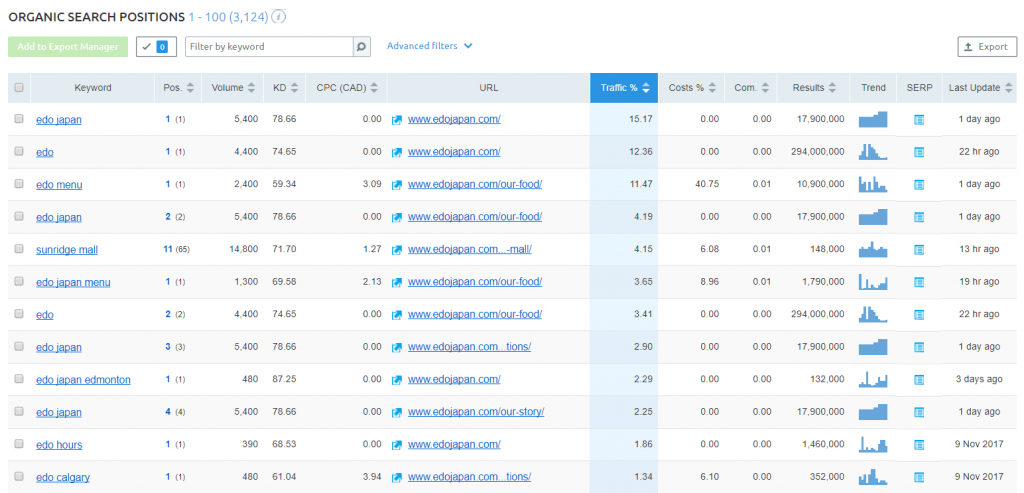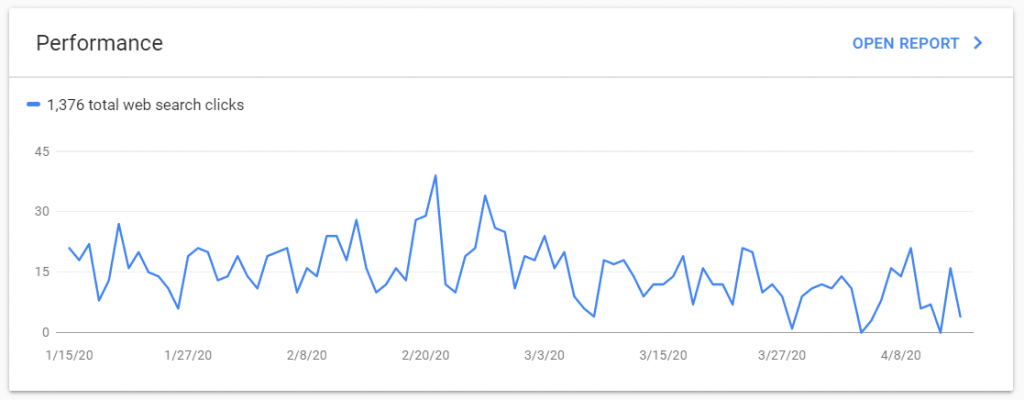Most people thinks SEO is dead, well I’m here to tell you it isn’t. It is here to stay, and organic search is still as important as ever to get traffic to your business or website.
In fact, organic traffic from SEO in my experience can have higher conversion rates.
SEO elements are always changing and hard to keep on top of, but some of the basics of SEO; the fundamentals if you were, remain the same. So, here are 5 SEO basics that anyone at any level can do to get you started on the right path.
1. Do basic keyword research
This is something you need to do even at a basic level to try understand what people are typing in to find you. We have to consider that people might not know our brand, so if they don’t know our brand we have to help them find us.

I’m not saying to invest in the paid tools that we use. There are free alternatives that with some basic research can help you on along the path.
You can simply go into Google and type in searches that you think people looking for you might type. Look at the results and see what they are using in their titles and descriptions. That should give you some ideas of what keywords your competitors are using for their optimization. If you also go to the base of the page, Google suggests related searches that people use that you can also consider.
Another option is to click into the search query bar where your search term is and see what other popular suggestions Google provides.
Now you also have to consider how competitive a market is to. If you are in real estate then the market is competitive, so trying to rank for say Calgary Realtor is probably going to be a lot harder than ranking for a new community in Calgary, say Belmont Realtor. It is likely also going to be easier if you target more specific keywords like pediatric dentist vs dentist and you can also include the location.
If you type in a search and the results don’t have the keywords in them, it means no one is targeting those keywords.
I would also ask others including customers what they might type in to find your product or service as people often think differently to us as we can be blinkered in our view of how people might go looking for us online.
One tool which can be useful is Google Trends. It’s a free tool from Google that you can go to and type in search terms and see how popular or not something is in your country and if over time it has been popular or only recently trending. You can also look at it to find what are referred to as break-out phrases where there is a spike in interest in a search term or topic. If you can find and optimize for breakout terms, you could get ahead of the competition by getting in front of prospects first.
If you sign up for Google Ads, you can use the free keyword planner in there too for research, without having to pay for any ads
There are also a ton of paid tools out there as well which offer free trials, or a limited amount of searches so you can learn more about what people are searching for related to your product or service. Some of the tools we use include SEMRush, Ahrefs, and Majestic.
2. On-page fundamentals
I’ve seen big brands that were not ranking forget about the fundamentals of on-page SEO.
What do I mean by on-page SEO?
Basically applying search engine optimization to the individual pages on your website. Taking the research you’ve just done on Google, and applying it to your website.
Think about the main headings on your pages, the meta title and the meta descriptions which should be updated to focus on your main target keywords using natural language. Why do that? Well The headline and meta description of your post or page is displayed in the search results. It’s probably the first thing a person sees and whilst it is not a direct ranking factor it can influence whether your page is clicked or not. Click through rate to your website is a ranking factor so you need to optimize your headline and description so that keywords are near the front of the headline and that the headline is catchy and engaging.
For the meta title, one little trick I use here is to use some symbols as pattern interrupts to make my clients listings stand out. So do something different from everyone else.
I would also look at the naming of your image files, ensuring they have image markup or alt image tags. If you are local business, one little trick is also to add location markup to your images.
Include some of your target keywords in the main body of your content as well as related keywords or synonyms. This way google gets to understand a lot more about the topics you are discussing on a page.
I would also make sure you have links to other pages on your website.
3. Content
Having analysed a lot of websites over the years as part of competitive analysis, the ones I see doing the best are the ones with lots of valuable content. Content is also a ranking factor. We could spend a whole show and more on content.
At a high level, just think about creating more content, writing for humans and creating content in different formats.
So whilst I understand creating content if you don’t have a team is time consuming, think strategically and logically.
Think of content topics related to your service industry and break them up into different subjects. If you think about a dentist they cover different areas like dental hygiene, emergency dental, orthodontics, and pediatric.
For each of these topics, at the highest level think about what problem the product or service solves, how does it do it, and what’s unique about your product or service and write about it and categorize it.
Writing for humans is another key element. I’ve seen big brands write very technically and using brand language which just doesn’t resonate with its target audience. At the same time, it doesn’t work for search engines, as its not the language your target market uses when looking for your product or service. So talk to your customers and really try to understand the language they use to find you; it might not be what you think. If you use more natural language that will also help you rank more for voice search too. If you consider 20% of mobile search is now via voice search, this is really important to consider.
Did you know the average length of content ranking on page one is 1890 words? So think about writing more long form vs short form. So your content needs to be as long as possible to give it depth. Longer content should provide more value to your site’s visitors. It also gives you space to target as many keywords as possible – whether intentionally or unintentionally.
More of an advanced content tip is to think about producing or repurposing content in multiple formats. People consume and engage with information differently, so ideally, try to develop content in multiple formats, so blog posts, video, audio, images, gifs, infographics. Also, often someone that wants to consume video or audio might not be able to based on their surroundings so providing written transcripts or subtitles can be great for consumption for also for SEO. Another thing providing multiple formats gives you is the opportunity for it to be shared more easily which makes them beneficial for traffic and SEO.
4. Get relevant links from authority sites
some quick wins you can get for rankings is to build profiles on sites Google would expect you to be on. Did you know that every website has a domain authority from 0 to 100. A new website would have zero until it builds some authority whilst sites like Facebook, YouTube and Amazon would have a DA close to 100. So you should be building profiles on these sites with a link back to your website. Also think about getting your brand profile links so aside from FB and YouTube think about Twitter, Instagram, and the other big social sites.
If you are a local business with a physical location, you also need to build what are called citation links, where your NAP (also known as Name, Address, and Phone number) are consistent and ideally should match your Google My business listing. So think of posting on sites like Yelp, 411, tomtom, apple maps, bing, brownbook, etc.. Note, some of these will try and sell you upgraded services but you don’t need those.
Now not all links are created equal, so you need to think also in terms of trying to get high quality links which are also in your industry and ideally local to you. Local links can also add authority even if they are not in your industry. Word of caution though, be careful who you get links from.
I’ve seen chiropractors providing registered therapy massage services get their website penalised because their massage therapist posted links from sites which they thought were harmless, but which Google tagged as toxic sites; sites that were less than reputable in Google’s eyes and through association, Google penalised the Chiropractors website.
5. Set up tracking on your website
This can and should include Google Analytics, Google Search Console as a bare minimum. If you don’t track and measure, you can’t see if you are improving your visibility online or make adjustments.

If you are a local business, also ensure you have claimed your Google My Business listing and then track your performance. You’ll learn where your traffic is coming from and what they are using to find you.
If you use pay-per-click you can also pull data to understand where you paid traffic is coming from and then optimize your site further for SEO.
These are all free tools.
You can also use heatmapping tools like hotjar and vwo to understand how people use your site. They have free basic account or trial options you can use.
Set up a sitemap. Depending on your website platform you should be able to get plugins to generate this for you. This lets Google know how your site is structured and if you create lots of content, gives them a clearer picture of what your site, product or service is about. If you make updates to your site with new content, Google will also then know about it as it will be updated in your sitemap.
Submit it to Google Search Console and don’t forget to submit it to Bing too.
Once you have these in place, run an SEO audit to understand what’s going on your website and where you can make improvements.
These are just 5 elements, but there are many more which I’m sure we will cover in future articles, but contact us if you want more advice or for us to audit your website or do your SEO.

